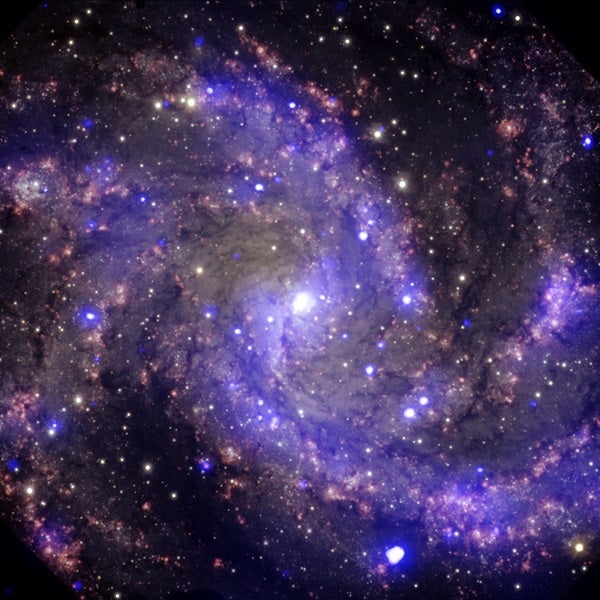A team of scientists may have confirmed the first failed supernova — and in the process witnessed the birth of a black hole.
Caltech astronomer Scott Adams and his colleagues Christopher Kochanek, Jill Gerke, and Krzystof Stanek of Ohio State University, and Xinyu Dai of the University of Oklahoma, devised a novel observation technique that uses the Large Binocular Telescope (LBT) to identify candidates for failed supernovae, that is, massive stars that have died without the typical spectacular explosion. Using the first four years of data from the LBT survey, the team zeroed in on a star in the NGC 6946 galaxy.
This star, N6946-BH1, caught their attention because in 2009 it flared up to more than one million times the brightness of the Sun, then gradually faded — and vanished. But not without leaving a tantalizing clue to what happened: a faint trace of near-infrared radiation (IR) that is consistent with energy emitted from matter as it spirals into a black hole.
“If this event really was a failed supernova, it means that we have observed the birth of a new black hole for the first time, which is really quite exciting,” says Adams. “But this finding also has wider implications.”
Since 2003, many astronomers have accepted the idea that some stars are too massive to go supernova. Because they can’t overcome their own gravity enough to explode, these stars simply extinguish and collapse into black holes. But there hasn’t been any direct evidence that it happens — until now.
Adams and his team reasoned that if failed supernovae occur in some red supergiants, the largest stars in the universe by volume, the process would produce a visible burst of gravitational energy — like the bright flash of light that the Hubble Space Telescope (HST) recorded in N6946-BH1 from March to May 2009. They submitted this finding to the Monthly Notices of the Royal Astronomical Society and published a preprint online early this month.
“It implies that failed supernovae are the solution to the mystery of why higher-mass red supergiants have not been seen as supernova progenitors, and why there is a gap between the mass distributions of neutron stars and black holes,” says Adams.
There are several other possible, but unlikely, explanations for what they’ve observed in N6946-BH1. Analysis of new and archival photometry data from HST and the Spitzer Space Telescope allows the team to all but rule out the possibility that the star is hidden behind a mask of ejected dust. They are waiting for more data from the orbiting Chandra X-ray Observatory. X-ray emissions at the star would confirm the presence of a black hole; however, if X-rays are not detected, the team will continue to monitor it and employ a more powerful telescope to be certain the star has vanished.
“This unique survey is still ongoing,” says Adams of his team’s work with the LBT. “In an upcoming paper we will present the results of the first seven years of the survey and our constraint on the fraction of core-collapses of massive stars that result in failed supernovae.”










